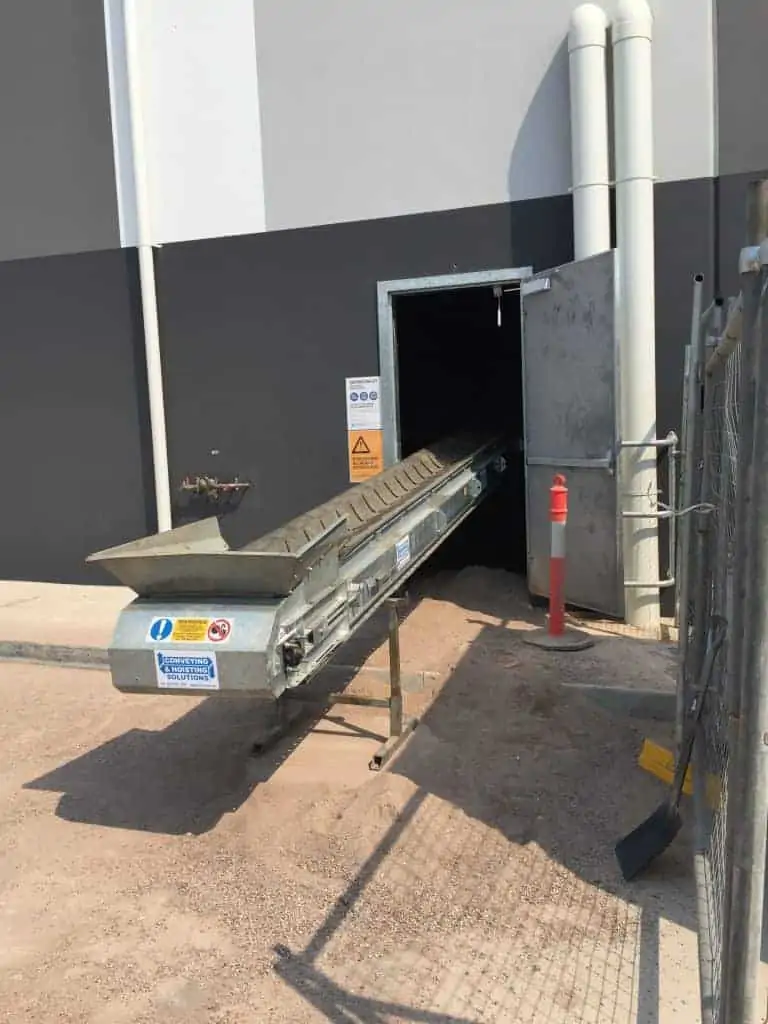We cannot undermine the importance of a conveyor belt in the material handling sector. You can carry various materials from one place to another in a hassle-free manner with these continuous moving strips. Whether you are creating a buffer zone between different process areas or packaging foods, they can come to your rescue time and again. But with different types available in the market, it’s easy to feel confused about which one to pick as your manufacturing aid. Today we will take a look at the different types of belts so that you can determine which one to use in your line of work:

Types
Spiral
Just as the name suggests, the spiral belts comprise a series of interconnected spirals rotating around each other. A spiral belt is used to transport small materials spread out over a big area. Food processing and packaging applications commonly use spiral conveyors. The USP of these belts is that they can transport products from one place to another sans damage. However, they take up a lot of space and aren’t ideal for confined areas.
Roller bed
These belts are made of rollers specially selected to match production requirements like the required speed of weight of products moving along the belt. The shorter ones falling under this category constitute just two rollers. Coupled with increasing distance between both ends of the belt, more rollers will be required for its functioning. If your items are loaded over the belt with gravity, then this setup can be very helpful.
Manual loading is infamous for causing mechanical damage to the rollers. However, you can transport items over long distances with roller bed belts. They reduce friction and make it easier to move products along the belt. You can sort, pack, inspect, assemble and transport items in airport baggage handling systems and postal sorting offices with a roller bed belt.
Flat
This highly prevalent conveyor system is used for internal conveyance like transporting items within a facility. They bank on multiple powered pulleys for moving a continuous flat belt consisting either of synthetic fabric or natural material. Once the items are placed atop the moving belt, they are carried from one end to another. These are commonly used in slow assembly lines, wash-down areas, and industrial environments to transport irregularly shaped or soft items without damaging them.
Modular
These systems use a single loop made from numerous interlocked pieces mostly made from hard plastic. You can remove and replace these segments individually rather than discarding the entire belt. Setting them up doesn’t require drilling or welding. These are more resistant to abrasive materials and easier to wash. As a result, you can maintain modular belt conveyors more easily than your flat belt counterparts.
You can use the modular belt conveyors in applications involving traveling around corners. Although other types of conveyors can accomplish the same, they require additional costs and a higher degree of customization. Any flexible manufacturing system calls for material handling and a modular conveyor can help accomplish the job.
Cleated
The cleated belt conveyors are designed with vertical barriers or cleats to secure loose materials during inclines and declines. Since the cleats come in different shapes, you can select the one according to your application.
Curved
A curved belt carries items around corners using a curved frame ranging up to 180 degrees. These are mostly used to change the item’s conveying direction in bag handling systems.
Incline/Decline
The rough surface of this belt is perfect for carrying products up or down. They feature a gear motor, and center drive, and take up either a single or double nose. The incline/decline belt can transport products to varying elevations while preventing them from falling off. These belts can also help boost gravity flow systems.
Washdown & sanitary
You can see this type of conveyor in action in the food and pharmaceutical industries involving sterilization and harsh washing. These conveyors are specially designed to withstand the sanitary procedures associated with these applications. They come fitted with flat wire belts making them both rugged and easy to maintain.
The USP of these conveyors lies in the fact that they can carry objects straight out of freezers or furnaces. They have to sustain hot oil, breading, or glaze for use in the food industry. You can offload break bulk goods such as crates or oil drums from ships with these conveyors equipped with flat wire belts.
Importance of Conveyor belts in industrial use:
- Tasks in the material handling industry require the transportation of heavy objects that are extremely manpower intensive. Employing manual labor doesn’t deliver any value addition but increases the risk of human injuries. An automated conveyor system can deliver increased production within a short period in a material handling industry. As a result, your manpower can focus more on critical tasks rather than wasting their time with unproductive chores.
- They can help with improved quality control by eradicating wastage in the process. It can easily identify problems with the product like unnecessary metal and faulty parts. You can organize the products for all upcoming operations through an automated conveyor system.
- The modular conveyors can deliver a high degree of flexibility. Installing them requires very less time and you can easily customize them as per your specific requirement.
Conclusion
The conveyor belts are usually made of PVC, rubber, neoprene, urethane, nitrile, nylon, leather, polyester, and others. Multiple layers of materials go into the construction of the industrial belts. The cover is the upper layer of belts and the Carcass is the underlying one. The properties of the belt determine its primary application. While grocery stores use PVC conveyors, mining industries use rubber belts for handling materials like raw ore. You will have to consider your particular line of work before buying or renting a belt for your business.




